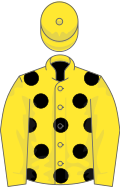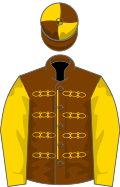Epsom Derby
 | |
| Class | Group 1 |
|---|---|
| Location | Epsom Downs Epsom, Surrey, England |
| Inaugurated | 1780 |
| Race type | Flat / Thoroughbred |
| Sponsor | Betfred |
| Website | Epsom Derby |
| Race information | |
| Distance | 1m 4f 6y (2,419m), or about 1½ miles |
| Surface | Turf |
| Track | Left-handed |
| Qualification | Three-year-olds excluding geldings |
| Weight | 9 st 0 lb Allowances 3 lb for fillies |
| Purse | £1,604,000 (2022) 1st: £909,628 |


The Derby Stakes, also known as the Derby or the Epsom Derby, is a Group 1 flat horse race in England open to three-year-old colts and fillies. It is run at Epsom Downs Racecourse in Surrey on the first Saturday of June each year, over a distance of one mile, four furlongs and 10 yards (2,423 metres), or about 1½ miles.[1] It was first run in 1780.
It is Britain's richest flat horse race, and the most prestigious of the five Classics. It is sometimes referred to as the "Blue Riband" of the turf. The race serves as the middle leg of the historically significant Triple Crown of British horse racing, preceded by the 2000 Guineas and followed by the St Leger, although the feat of winning all three is rarely attempted in the modern era due to changing priorities in racing and breeding, and the demands it places on horses.
The name "Derby" (deriving from the sponsorship of the Earl of Derby) has been borrowed many times, notably by the Kentucky Derby in the United States, and to describe many other key racing and sporting events. The term "Epsom Derby" is often used in the United States and elsewhere, in order to differentiate The Derby from other races such as the Irish Derby or German Derby.[2] The Derby run at Epsom is usually referred to as "the Derby" in Great Britain. It is one of Britain's great national sporting events[3] and has a large worldwide TV audience.[4]
History
[edit]The Stanley family, Earls of Derby, had a long history of horse-racing, and James Stanley, 7th Earl of Derby, who gained the Lordship of Mann in 1627, instituted horse-racing on the Langness Peninsula on the Isle of Man, donating a cup for what became known as the "Manx Derby".[5]
The Derby originated at a celebration following the first running of the Oaks Stakes in 1779. A new race was planned, and it was decided that it should be named after either the host of the party, the 12th Earl of Derby, or one of his guests, Sir Charles Bunbury (the Bunbury Cup run at Newmarket would later be named in his honour). According to legend the decision was made by the toss of a coin, but it is probable that Bunbury, the Steward of the Jockey Club, deferred to his host.[6] The inaugural running of the Derby was held on Thursday 4 May 1780. It was won by Diomed, a colt owned by Sir Charles Bunbury, who collected prize money of £1,065 15s. The first four runnings were contested over the last mile of the old Orbicular course <49>, this extended in line with the Oaks to the current distance of 1½ miles in 1784. Lord Derby achieved his first success in the event in 1787, with a horse called Sir Peter Teazle.
The starting point of the race was moved twice during the 19th century. The first move, suggested by Lord George Bentinck, was in 1848, and the second was in 1872. It was discovered in 1991 that the exact length of the race was one mile, four furlongs and 10 yards.[7]
Initially, the Derby was run on a Thursday in late May or early June, depending on when Easter occurred. In 1838 the race was moved to a Wednesday to fit in with the railways' timetables, but still followed the moveable feast of Easter. In the 20th century, the race was run mainly on a Wednesday in late May or early June until 1994, after which it was changed to a Saturday in early June.[8] From 1915 to 1918 (during World War I), it was on a Tuesday, with the race's latest ever date being 31 July 1917.[9] From 1942 to 1945 (during World War II), 1947 to 1950, and in 1953, the race was run on a Saturday.[7] From 1969 to 1994, it was on the first Wednesday in June. From 2003 to at least 2022, it has been on the first Saturday in June, apart from a race on 4 July 2020 without spectators, owing to COVID-19.
The Derby has been run at Epsom in all years except during the world wars; from 1915 to 1918 and from 1940 to 1945, the Derby was run at Newmarket as the 'New Derby'.
With the race's close association with gambling, the most controversial running of the Epsom Derby took place in 1844. The winner, Running Rein, was disqualified on discovery that a four-year-old imposter, a horse by the name Maccabeus, had been substituted in his place as part of a betting coup.[10]
The Derby has inspired many similar events around the world. European variations include the Derby Italiano, the Deutsches Derby, the Irish Derby and the Prix du Jockey Club (popularly known in the British Isles as the "French Derby"). Several races in the United States include the "Derby" name, including the oldest, the Kentucky Derby. Other national equivalents include the Australian Derby, the New Zealand Derby, and the Japanese Derby.
In 1931, the Derby became the world's first outdoor sporting event to be televised.[11]
There is a maximum of 20 runners allowed in the race.[12]
Since the 1993 edition, The Derby has introduced yearling entry. The system were canceled from 2024 edition and 2022 during COVID-19 pandemic.[13]
Epsom Fair
[edit]
For many years the Derby was run on a Wednesday or a Thursday and on the day huge crowds would come from London, not only to see the race but to enjoy other entertainment (during some of the 19th century and most of the 20th, Parliament would adjourn to allow members to attend the meeting).[14][15][16]
By the time that Charles Dickens visited Epsom Downs to view the race in the 1850s, entertainers such as musicians, clowns, and conjurers plied their trades and entertained the crowds; other forms of entertainment included coconut stalls.[17] The crowded meeting was the subject of a painting by William Powell Frith painted in the 1858 and titled The Derby Day; critics have noted that the foreground of the painting features the entertainment attractions, while the racing is relegated to the margins.[18]
In the 1870s, the steam-driven rides were introduced. They were located at the Tattenham Corner end of the grounds and the fair was on for ten days and entertained hundreds of thousands.[17] During the latter half of the 20th century, Derby Day became less popular and the race was moved from Wednesday to Saturday in 1995 with the hope of reviving high attendance.[14] As the number of people attending the fair dwindled in the face of competition for attention and changing tastes, its length was reduced from 10 days to three or four.[17]
Modern format
[edit]Today, the free-admission Hill still provides a festival atmosphere with a fairground in operation on the Friday and Saturday.[19] The walk-in nature of the Hill typically sees Derby attendances exceed 100,000 spectators, making it one of the largest sporting events in the United Kingdom.[20]
Sponsorship
[edit]In 2021 and 2022 the race, along with seven other races at the Derby festival, was sponsored by Cazoo.[21] Cazoo declined an option to extend their sponsorship[22] and in April 2023 the bookmaker Betfred agreed a three-year deal to sponsor the Derby and Oaks.[23]
Investec was the previous sponsor of the Derby between 2009 and 2020. The race was previously backed by Ever Ready (1984–94) and Vodafone (1995–2008).[24]
Popular culture
[edit]- The 1952 drama film Derby Day, directed by Herbert Wilcox and starring Michael Wilding and Anna Neagle, is set entirely around the Derby.
- Other films which centre on the Derby are Wings of the Morning, notably, the first British technicolor film; The March Hare; and the most accurate of the quartet Esther Waters, directed by Ian Dalrymple and starring Kathleen Ryan and Dirk Bogarde, this dramatically set around the Derbys of 1881 and 1885.
- The Derby is also the setting for the series 2 finale of BBC television's Peaky Blinders.
- The Derby race features as a plot in a stage show in the film Yankee Doodle Dandy where James Cagney performs a wonderful song and dance routine.
| 2024 | ||
 |  |  |
| City Of Troy | Ambiente Friendly | Los Angeles |
| Previous years | ||
|---|---|---|
| 2023 | ||
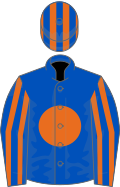 |  |  |
| Auguste Rodin | King Of Steel | White Birch |
| 2022 | ||
 |  | 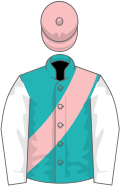 |
| Desert Crown | Hoo Ya Mal | Westover |
| 2021 | ||
 |  | 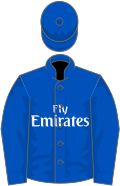 |
| Adayar | Mojo Star | Hurricane Lane |
| 2020-2011 | ||
|---|---|---|
| 2020 | ||
 |  |  |
| Serpentine | Khalifa Sat | Amhran Na Bhfiann |
| 2019 | ||
 | 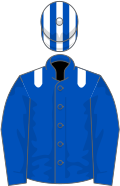 |  |
| Anthony Van Dyck | Madhmoon | Japan |
| 2018 | ||
 |  |  |
| Masar | Dee Ex Bee | Roaring Lion |
| 2017 | ||
 |  |  |
| Wings of Eagles | Cliffs of Moher | Cracksman |
| 2016 | ||
 |  |  |
| Harzand | US Army Ranger | Idaho |
| 2015 | ||
 |  |  |
| Golden Horn | Jack Hobbs | Storm The Stars |
| 2014 | ||
 |  |  |
| Australia | Kingston Hill | Romsdal |
| 2013 | ||
 |  |  |
| Ruler Of The World | Libertarian | Galileo Rock |
| 2012 | ||
 |  |  |
| Camelot | Main Sequence | Astrology |
| 2011 | ||
 |  |  |
| Pour Moi | Treasure Beach | Carlton House |
| 1950-1946 | ||
|---|---|---|
| 1950 | ||
 |  |  |
| Galcador | Prince Simon | Double Eclipse |
| 1949 | ||
 |  |  |
| Nimbus | Amour Drake | Swallow Tail |
| 1948 | ||
 |  |  |
| My Love | Royal Drake | Noor |
| 1947 | ||
 |  |  |
| Pearl Diver | Migoli | Sayajirao |
| 1946 | ||
 |  |  |
| Airborne | Gulf Stream | Radiotherapy |
Records
[edit]Leading jockey (9 wins)
[edit]- Lester Piggott – Never Say Die (1954), Crepello (1957), St. Paddy (1960), Sir Ivor (1968), Nijinsky (1970), Roberto (1972), Empery (1976), The Minstrel (1977), Teenoso (1983)
- Aidan O'Brien – Galileo (2001), High Chaparral (2002), Camelot (2012), Ruler of the World (2013), Australia (2014), Wings of Eagles (2017), Anthony Van Dyck (2019), Serpentine (2020), Auguste Rodin (2023), City Of Troy (2024)
Leading owner (11 wins): (includes part ownership)
[edit]- Sue Magnier, Michael Tabor – Galileo (2001), High Chaparral (2002), Pour Moi (2011), Camelot (2012), Ruler Of The World (2013), Australia (2014), Wings of Eagles (2017), Anthony Van Dyck (2019), Serpentine (2020), Auguste Rodin (2023), City Of Troy (2024)
Leading sire (5 wins)
[edit]- Galileo – New Approach (2008), Ruler Of The World (2013), Australia (2014), Anthony Van Dyck (2019), Serpentine (2020)
Dams of two winners
[edit]- Flyer (Rhadamanthus and Daedalus)
- Highflyer mare, known as Eagle's Dam, (Didelot and Spread Eagle)
- Horatia (Archduke and Paris)
- Arethusa (Ditto and Pan)
- Penelope (Whalebone and Whisker)
- Canopus mare (Lap-dog and Spaniel)
- Arcot Lass (St. Giles and Bloomsbury)
- Emma (Mündig and Cotherstone)
- Perdita II (Persimmon and Diamond Jubilee)
- Morganette (Galtee More and Ard Patrick)
- Windmill Girl (Blakeney and Morston)
- Urban Sea (Galileo and Sea the Stars)[25]
Other records
[edit]Winners
[edit]Winning distances are shown in lengths or shorter (dh = dead-heat; shd = short-head; hd = head; snk = short-neck; nk = neck).
- ^ The 1828 race finished as a dead-heat, but Cadland won a run-off against The Colonel by ½ length
- ^ a b The 1844 and 1913 winners were awarded victory after the disqualification of the first-placed horse
- ^ The 2020 race was run in July due to the COVID-19 pandemic in the United Kingdom
Timeline
[edit]

- 1805: One of the horses was brought down by a spectator.
- 1825: Middleton never raced before or after winning the Derby.
- 1838: Amato never raced before or after winning the Derby.
- 1844: The original winner Running Rein was disqualified as he was actually an ineligible four-year-old horse named Maccabeus.[52]
- 1881: Iroquois became the first American-bred to win a leg of the British triple crown.
- 1884: The race finished with a dead-heat between Harvester and St. Gatien.
- 1887: Merry Hampton is the most recent horse to win the Derby with no previous victories.
- 1894: The winner was owned by the Prime Minister at the time, the 5th Earl of Rosebery.
- 1901: The first year in which a mechanical starting gate was used.
- 1909: Minoru was the first Derby winner owned by a reigning monarch, King Edward VII, who had previously won twice as Prince of Wales.
- 1913: The 6/4 favourite Craganour, owned by Charles B. Ismay, brother of J. Bruce Ismay of the Titanic, was controversially disqualified, and the race was awarded to the 100/1 outsider Aboyeur. Suffragette Emily Davison was struck by King George V's horse, Anmer, she died four days later.
- 1916: Fifinella, who also won The Oaks, is the most recent (as of 2022) of six fillies to win the race. The previous five were Eleanor (1801), Blink Bonny (1857), Shotover (1882), Signorinetta (1908), Tagalie (1912).
- 1921: The winner Humorist died two weeks after the race.
- 1927: The first Derby to be broadcast by the BBC.
- 1931: The first outdoor sporting event ever televised (by John Logie Baird and his company using the BBC's transmitter).
- 1932: April the Fifth is the most recent winner trained at Epsom.
- 1946: Airborne is the most recent (as of 2017) of four grey horses to win the Derby.
- 1953: Pinza was the only winner in the race for the jockey Sir Gordon Richards, after 27 unsuccessful attempts.
- 1960: Although there had been an experimental TV transmission of the race in the early 1930s, regular television coverage of the Derby began this year, initially on both BBC and ITV.
- 1962: Larkspur wins at odds of 22/1 after seven horses are bought down nearing Tattenham Corner; one horse is killed and four jockeys are detained in hospital.
- 1967: Starting stalls used for the first time.
- 1989: The runner-up Terimon is the longest-priced horse to finish placed in the Derby, at odds of 500/1.
- 1996: Alex Greaves became the first female jockey to ride in the race. She finished last of the 20 runners on the filly Portuguese Lil.[30]
- 1998: The most recent (as of 2019) filly to take part, the 1,000 Guineas winner Cape Verdi, started as 11/4 favourite but could only finish ninth.[32]
- 2006: Martin Dwyer's winning ride on Sir Percy subsequently won the Lester Award for "Flat Ride of the Year".[40]
- 2007: Authorized provided jockey Frankie Dettori with his first winner in the Derby after 14 previous attempts.[41]
- 2008: Jim Bolger, the trainer of the winner New Approach, had left the horse entered for the race "by mistake", having not initially intended to run.[42]
- 2010: Workforce broke the Epsom track record winning in the time 2m 31.33s previously held by Lammtarra who set it in 1995 at 2m 32.31s.[44]
- 2012: Aidan O'Brien and his 19-year-old son Joseph became the first father-son/trainer-jockey combination to win the race.[53] Hayley Turner became the second female jockey to ride in the race, on Cavaleiro, finishing last of the nine horses which went to post, the lowest number since 1907.[46]
- 2014: Aidan O'Brien became the first person to train three consecutive winners of the race.[48]
- 2017: Ana O'Brien, daughter of Aidan, was the third female jockey to ride in the race, on The Anvil. By finishing 17th of the 18 runners, she became the first woman to beat another runner to the line.[51]
- 2019: Kevin McCarthy and Michael Church (Official Derby Historian), wrote a 17-page Academic Essay to solve the debated question of "Where did the first Derby start from?" (See www.michaelchurchracingbooks.com).Proving it to be from the Mile Post on the old Orbicular or Cup Course - a few yards from today's running rail. Thereafter, a week before the 2019 Derby, the Epsom management put up a plaque to commemorate the starting place of the first Derby.
See also
[edit]References
[edit]- ^ "The Derby at Epsom". The Jockey Club. Retrieved 1 May 2023.
- ^ Church, Michael The Derby Stakes, 1780-2013 (Raceform, 2016, ISBN 978-1910498927, p.12)
- ^ "Crowds flock to Epsom for Derby Day". BBC News. Archived from the original on 8 October 2018. Retrieved 22 June 2018.
- ^ "BBC Worldwide Offers International TV Rights to Epsom Derby". Sportcal. Archived from the original on 29 October 2017. Retrieved 1 February 2017.
- ^ Mona Miscellany Second Series, Volume 21 pp183-187, The Manx Society (1873), [1] Archived 4 March 2016 at the Wayback Machine
- ^ "The Epsom Derby uncovered". BBC Sport. 2 June 2001. Archived from the original on 11 September 2007. Retrieved 2 June 2012.
- ^ a b "The Derby Festival".
- ^ "The Epsom Derby". Retrieved 23 November 2022.
- ^ "31 July 1917 – The latest ever Epsom Derby day". 9 June 2020.
- ^ Byles, Tony (2011). In Search of Running Rein: The Amazing Fraud of the 1844 Derby. Apex Publishing Ltd. ISBN 978-1906358945.
- ^ Baird, Iain Logie (1 April 2021). "Televising the Derby (1931)". Bairdtelevision.com.
- ^ "Epsom Derby Runners 2023 – Favourites, Contenders, Longshots & Much More". www.horseracing.co.uk. Retrieved 9 May 2023.
- ^ Derby entry rules changed to allow 'more flexibility for owners and trainers'
- ^ a b Telegraph View (3 June 2011). "Epsom Derby: Spirits up on the Downs". The Telegraph. Archived from the original on 26 June 2012. Retrieved 30 June 2012.
- ^ Malden, Henry Elliot, ed. (1902). The Victoria history of the county of Surrey. Westminster: A. Constable. p. 505.
- ^ "English and Foreign". Otago Witness. 24 July 1880. Archived from the original on 5 March 2016. Retrieved 30 November 2011.
- ^ a b c Crane, Helen (4 June 2009). "Century of tradition lost as Epsom Derby Fair scrapped". Surrey Comet. Newsquest. Archived from the original on 2 April 2016. Retrieved 27 January 2012. (Backup: This is Local London Archived 4 March 2016 at the Wayback Machine)
- ^ Payne, Christiana (July 2001). "A Day at the Races". The Spectacle of Dress in Victorian Painting. Science Museum. Archived from the original on 26 January 2012.
- ^ The Hill. The Jockey Club. Retrieved 2 June 2022.
- ^ Queen to miss Epsom Derby for just the fourth time in 75 years. iNews. 4 June 2021. Retrieved 2 June 2022.
- ^ Harding, Jonathan (1 April 2021). "Car retailer Cazoo unveiled as headline Derby festival sponsor". Racing Post. Retrieved 1 April 2021.
- ^ Wood, Greg (27 March 2023). "Talking Horses: Derby must avoid bookmaker backing for good of racing". The Guardian. Retrieved 27 March 2023.
- ^ Scargill, Peter (11 April 2023). "'The Derby remains the greatest Flat race in the world' - Betfred to sponsor Epsom Classics in three-year deal". Racing Post. Retrieved 11 April 2023.
- ^ "Bankers ride to the rescue of Derby". The Independent. 5 May 2009. Retrieved 30 June 2012.
- ^ Racetrack Sires 2009, June/August 2009, p.54
- ^ "1992 Epsom Derby Result". Timeform. Archived from the original on 18 October 2017. Retrieved 18 October 2017.
- ^ "1993 Epsom Derby Result". Timeform. Archived from the original on 19 October 2017. Retrieved 18 October 2017.
- ^ "1994 Epsom Derby Result". Timeform. Archived from the original on 18 October 2017. Retrieved 18 October 2017.
- ^ "1995 Epsom Derby Result". Timeform. Archived from the original on 18 October 2017. Retrieved 18 October 2017.
- ^ a b "1996 Epsom Derby Result". Timeform. Archived from the original on 18 October 2017. Retrieved 18 October 2017.
- ^ "1997 Epsom Derby Result". Timeform. Archived from the original on 18 October 2017. Retrieved 18 October 2017.
- ^ a b "1998 Epsom Derby Result". Timeform. Archived from the original on 18 October 2017. Retrieved 18 October 2017.
- ^ "1999 Epsom Derby Result". Timeform. Archived from the original on 19 October 2017. Retrieved 18 October 2017.
- ^ "2000 Epsom Derby Result". Timeform. Archived from the original on 18 October 2017. Retrieved 18 October 2017.
- ^ "2001 Epsom Derby Result". Timeform. Archived from the original on 18 October 2017. Retrieved 18 October 2017.
- ^ "2002 Epsom Derby Result". Timeform. Archived from the original on 18 October 2017. Retrieved 18 October 2017.
- ^ "2003 Epsom Derby Result". Timeform. Archived from the original on 18 October 2017. Retrieved 18 October 2017.
- ^ "2004 Epsom Derby Result". Timeform. Archived from the original on 18 October 2017. Retrieved 18 October 2017.
- ^ "2005 Epsom Derby Result". Timeform. Archived from the original on 18 October 2017. Retrieved 18 October 2017.
- ^ a b "2006 Epsom Derby Result". Timeform. Archived from the original on 18 October 2017. Retrieved 18 October 2017.
- ^ a b "2007 Epsom Derby Result". Timeform. Archived from the original on 18 October 2017. Retrieved 18 October 2017.
- ^ a b "2008 Epsom Derby Result". Timeform. Archived from the original on 18 October 2017. Retrieved 18 October 2017.
- ^ "2009 Epsom Derby Result". Timeform. Archived from the original on 18 October 2017. Retrieved 18 October 2017.
- ^ a b "2010 Epsom Derby Result". Timeform. Archived from the original on 18 October 2017. Retrieved 18 October 2017.
- ^ "2011 Epsom Derby Result". Timeform. Archived from the original on 18 October 2017. Retrieved 18 October 2017.
- ^ a b "2012 Epsom Derby Result". Timeform. Archived from the original on 18 October 2017. Retrieved 18 October 2017.
- ^ "2013 Epsom Derby Result". Timeform. Archived from the original on 18 October 2017. Retrieved 18 October 2017.
- ^ a b "2014 Epsom Derby Result". Timeform. Archived from the original on 18 October 2017. Retrieved 18 October 2017.
- ^ "2015 Epsom Derby Result". Timeform. Archived from the original on 18 October 2017. Retrieved 18 October 2017.
- ^ "2016 Epsom Derby Result". Timeform. Archived from the original on 18 October 2017. Retrieved 18 October 2017.
- ^ a b "2017 Epsom Derby Result". Timeform. Archived from the original on 18 October 2017. Retrieved 18 October 2017.
- ^ Foulkes, N. (2010). Gentlemen and Blackguards: Gambling Mania and Plot to Steal the Derby of 1844. London: Weidenfeld & Nicolson. p. ?. ISBN 978-0297844594.
- ^ Alysen Miller (2 June 2012). "Camelot makes history as Queen watches". CNN. Archived from the original on 3 June 2012. Retrieved 3 June 2012.
49. Kevin McCarthy and Michael Church's 17 page Academic Essay, "Where did the first Derby start from?" Available on www.michaelchurchracingbooks.com
Further reading
[edit]- Church, Michael (1997). The Derby Stakes 1780–1997. Racing Post Ltd. pp. 1–608. ISBN 189874615X.
- Church, Michael (2006). The Derby Stakes - The Complete History - 1780-2006. Raceform Ltd. pp. 1–639. ISBN 1-905153-36-8.
- Church, Michael (2007). The Derby Chart 1780-2007. Raceform Ltd. pp. 1 A2.
- Church, Michael (2016). The Derby Stakes - The Blue Ribbon of the Turf - Revised and updated – 1780–2016. Raceform Ltd. pp. 1–255. ISBN 978-1-910498-92-7.
- Mortimer, Roger (1973). The History of the Derby Stakes. Michael Joseph. pp. 1–764.
- Abelson, Edward; John Tyrrel (1993). The Breedon Book of Horse Racing Records. Breedon Books. pp. 49–56. ISBN 1-873626-15-0.
- Randall, John; Tony Morris (1985). Horse Racing: The Records. Guinness Superlatives Ltd. pp. 34–43. ISBN 0-85112-446-1.
External links
[edit]- Paris-Turf
- Racing Post:
- "The Blue Ribbon of the Turf" (1890) OpenLibrary.org
- The Derby Stakes (Englisches Derby) Liste de Sieger (in German)
- Derby Archived 20 March 2016 at the Wayback Machine Horse Racing History Online
- ifhaonline.org International Federation of Horseracing Authorities – Investec Derby Stakes 2019
- DERBY STAKES – EPSOM DOWNS: GREAT BRITAIN – Grade I Pedigree Online
- Race Recordings (1950-2005) youtube.com
- Investec Epsom Derby Festival The title sponsor, Investec


 French
French Deutsch
Deutsch































